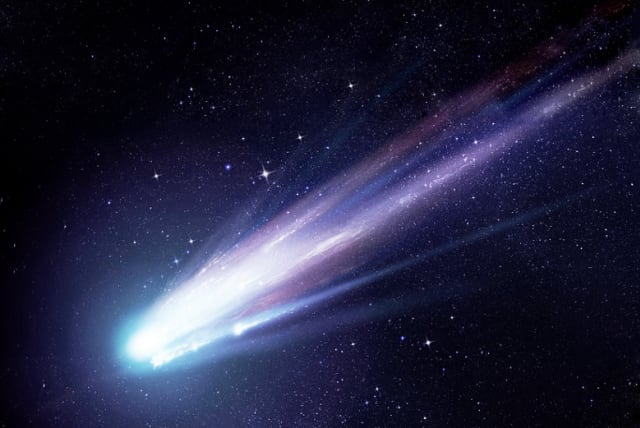Giant comet grows horns after ice volcano eruption

Comet 12P/Pons-Brooks is a cryovolcanic comet that orbits the Sun every 71 years. After a possible volcanic eruption, it now has what seems to be two massive horns.
A massive comet heading towards the Sun has seemingly sprouted a set of gigantic bright horns after it underwent a bright and cold volcanic eruption, according to images shared by the Comet Chasers, a research group led by Helen Usher of Cardiff/The Open Universities.
The comet in question is 12P/Pons-Brooks, a gigantic comet thought to be around 34 kilometers in diameter. For context, that's around the entire length of the border between Austria and Lichtenstein.
The comet itself is one that is well-known to science, having been officially discovered back in the 1800s. It passes around the Sun every 71 years, with its next trip past Earth slated for April 21, 2024.
However, the comet was never perceived as having such enormous horns. And yet now, it seems to have horn-like emissions of light that are around 7,000 times wider than the comet itself. So what happened?
How did a comet get horns?
Comets are massive objects in space, just like asteroids, but unlike them, they're mostly made of dust, gas, and ice. It is also surrounded by a cloud of gas called a coma, which is what forms its tail. However, 12P/Pons-Brooks isn't just a comet – it's a cryovolcanic comet. This means it has so much gas and ice that builds up that it will eventually explode with cryomagma spewing out of the many cracks that form in the comet.
Now, this isn't actual magma. Rather, it's a mixture of gases and liquid hydrocarbon.
Though they are rare, other comets are known to have cryovolcanos. The most famous of these is likely 29P/Schwassmann-Wachmann, which has had several volcanic eruptions and is often dubbed one of the most volcanically active bodies in the solar system.
But on July 20, Elek Tamás of Harsona Observatory, Nyiregyhaza, Hungary noticed that the comet was 100 times brighter than it was the day before, with its coma now forming two horn-like patterns, which some experts have said made it looks like the Millenium Falcon spaceship from Star Wars, though which could also be compared to the saucer section of the USS Enterprise, with the trailing end of the "horns" resembling the ship's port nacelles.
But there are other cryovolcanic comets out there, and they don't have horns. So why does this one?
Speaking to LiveScience, British astronomer and cryovolcanic comet expert Dr. Richard Miles explained that this was likely due to the comet having an irregular shape. This irregularity would have partially blocked the gas, causing it to go elsewhere until eventually released like this.
Jerusalem Post Store
`; document.getElementById("linkPremium").innerHTML = cont; var divWithLink = document.getElementById("premium-link"); if (divWithLink !== null && divWithLink !== 'undefined') { divWithLink.style.border = "solid 1px #cb0f3e"; divWithLink.style.textAlign = "center"; divWithLink.style.marginBottom = "15px"; divWithLink.style.marginTop = "15px"; divWithLink.style.width = "100%"; divWithLink.style.backgroundColor = "#122952"; divWithLink.style.color = "#ffffff"; divWithLink.style.lineHeight = "1.5"; } } (function (v, i) { });

